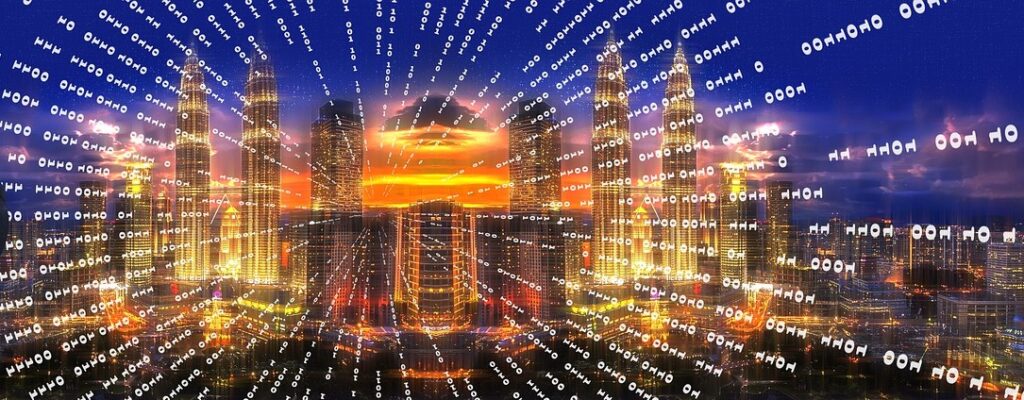

The first day of the IoT Tech Expo Europe 2020, Tuesday 24 November, hosted the panel “It’s a Smart World After All – The Role of IoT in Buildings, Healthcare, Retail & Beyond”. The session gave a high-level view of what IoT deployment currently looks like, its principle challenges and the effects of the COVID-19 pandemic on its development, from a number of commercial and governance perspectives. Maria Zervaki, Compliance and Market Intelligence manager, represented Access Partnership, bringing a regulatory insight to the table. Interoperability emerged as a key theme in IoT functionality, giving rise to both challenge and opportunity, especially in the areas of regulation and data privacy.
Interoperability in IoT Deployments
Interoperability is at the core of IoT deployments. IoT devices ideally integrate seamlessly together, enriched by shared data. Jon Harros of the Zigbee Alliance, which develops standards for IoT, explained that technologies are beginning to converge around IP platforms to facilitate this. IP, which drives the Internet, is ideal for the purpose because it can span multiple networks and technologies. Significantly, the use of these platforms can facilitate the maintenance of privacy and security across different devices and apps, a central concern to the IoT which formed part of the later discussion.
The commerciality of smart solutions also depends on their interoperability. Lizi Jenkins of Rentokil Initial emphasised that monitoring technologies deployed in connected buildings and connected cities only confer financial savings and efficiency enhancements when their data can be coordinated. The use of disparate technologies to collect and analyse data, such as water, energy and security data in a connected building, misses out on the greater potential benefits of a whole-building view. The same principle applies, on a larger scale, in the case of connected cities.
Policy is essential to regulate this kind of coordination between devices which is at the heart of the IoT, and alliances and governments alike have recently begun to seek regulatory standardisation in the area. Maria Zervaki illustrated that this regulation, particularly around security and privacy, is critical to the optimal functionality of IoT devices.
Diverging Regulation
While essential, regulation also presents challenges to the deployment of IoT devices. Divergent regulation in different countries and jurisdictions must be considered by manufacturers and can incur additional costs and design barriers.
Some countries have particularly restrictive regulation. Mika Hakosalo from Stockholms Stad explained that Swedish regulation on camera surveillance is very strict, presenting a barrier to the use of cameras in smart city applications such as traffic or accident monitoring. He suggested that these applications should be governed differently, as their function is data collection rather than surveillance. This would require policymakers to establish distinctive regulation for IoT use cases.
Zervaki summarised the regulatory challenge. So far in the realm of IoT, there is no universal regulation or understanding of how to regulate because, as in the case of all edge technologies, the technology is developing faster than regulators react, leading to regulatory uncertainty. This uncertainty also concerns the division of responsibility in the IoT value chain: whether regulatory controls should be placed on the device, on the flow of data, on the user or on the connectivity provider.
Protecting the Data
Since the IoT depends on a vast amount of data, much of which is personal, data privacy is an essential concern, which regulation must recognise and respond to. Zervaki identified key features of privacy policy for IoT companies: transparency; consent of personal data subjects; use of necessary data only; retention of data for no longer than necessary; and encryption. Strong and transparent privacy policies will be essential to generating consumer trust. This is a particular challenge in the case of data such as facial recognition, which is difficult to anonymise.
COVID-19 Impact
The impact of the pandemic has been diverse. From a product development perspective, 2020 has been a record year for new IoT device certifications; however, IoT regulation has seen a slowdown, as policymaker attention has been diverted elsewhere.
Looking ahead, sectors are likely to have to respond to the lasting effects of a remote or flexible model of work and education. There may be a need for more multi-purpose buildings in city planning, and devices will need to operate seamlessly between the office and home. Connectivity, fundamental to the IoT, has proved to be essential to a functioning society.
Certain benefits of the IoT have become more pertinent, such as cashless transactions or the possibility for predictive technology to anticipate surges in energy demand. This current might push IoT technologies more into the mainstream.
Challenge and Opportunity
The panel participants agreed that IoT players have the chance to advocate for helpful regulation, which will lead to consumer trust and an effective division of responsibility between actors in the value chain. Furthermore, the IoT continues to innovate, with the incorporation of technologies such as edge computing, blockchain and machine learning. These advancements will present further challenge and opportunity for industry players and regulators.